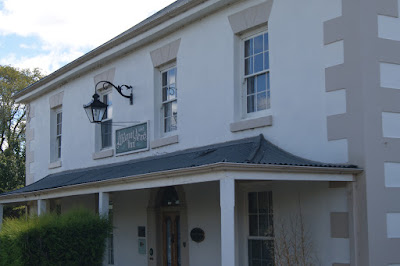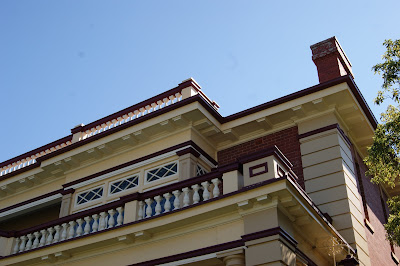The history of St. Luke's Church is almost as old as the township itself. The township was founded by Governor Macquarie, of New South Wales, in 1821, during one of his visits, Tasmania then being a dependency of that State. The first clergyman to arrive was the Rev. William Bedford in1833, who held services in the old police offices which afterwards became the Council Chambers, the oldest building in the town in December 1833. The last public ceremony performed by Governor Arthur was the laying of the foundation stones of the Campbell Town and Ross Churches, both of which were set in place on the same day, one in the morning and the other in the afternoon of October 20, 1836.

The first baptism took place on December 11, 1833, that of Charles George Henry Care Clarke, son of George Care and Hannah Maria Clarke, of Ellenthorpe Hall, who was born on May 25, 1832, the Rev. William Bedford, Jr., being the officiating minister. In all, there had been 2,370 baptisms in the church by 1933. The first recorded burial was that of John Paine, farmer, of Bendemere, on June 14, 1834.
In 1835 plans for the proposed church were prepared by John Lee Archer, the civil engineer under Governor Arthur. It was soon discovered that part of the base had been laid down without foundations being laid. A new contractor was called in to complete the construction. This, however, was not the end of the problems as the whole building was found to be so poorly constructed that extensive repairs were required before it could be consecrated.As soon as this work was finished, the Church was consecrated by Bishop Nixon on June 11, 1850.

On the blackwood notice board in the porch, on the right as one enters the church, the following information appears over the list of rectors: "Erected into a Parish, 1833; foundation stone laid by Governor Arthur, 1835; re stored, and new vestry, 1920." The lectern in the Church was given by Mrs. George Wilson, and Miss Leake, of ‘Rosedale,’ gave a new pulpit during this period. In 1876 the organ and choir were moved from the west to the east end of the Church. New altar rails, new lamps and a new Communion set. Also a new bell, which weighed five hundredweight, was installed.
The bell was swung on a tripod in the grounds as the brickwork of the tower was too weak to hold it. The present vicarage was built in 1888, mainly through the generosity of Miss Sarah Leake. The following year the tower was strengthened and the bell placed in it. The handsome English pipe organ was manufactured by J. W. Walker, London, in 1862.
St. Luke's Church is an imposing bright-red brick structure, with tiled roof, and is nicely situated amid pinus insignis trees at the north-eastern end of the township, on the east side of the Hobart Launceston main road. Excepting that two bad cracks developed in the southern side of the building a few years ago (one at each end), the church is in a good state of preservation, and stands in the north-western corner of the cemetery, which contains many striking monuments, those outstanding being to the families of Leake, Foster, Jones, Towns, Palmer, Harrison, Crow, Curtis, Powell, Flanagan, Bush, and Valentine.

Interest surrounds the life of the Rev. Kenneth William Kirkland, a rector of St. Luke's, whose humble tombstone in the local cemetery discloses that he died on October 2, 1866, at the age of 27 years, two days after his only child, Susan Annie Kenneth, who died on September 30 1866, at the age of five months. In 1865, local identity Dr Valentine made church history by objecting to the ordination of Rev Kirkland. Valentine’s objection was regarding Kirkland’s refusal to give up some high church practices which Valentine disagreed with. Kirkland was eventually ordained at St David’s in Hobart. In the end, Kirkland was only Rector for 12 months.
The church remains an active part of the Anglican diocese to this day as part of the North Midlands parish.
Main Text & Information Source –
Interpretive Sign At The Site



















































